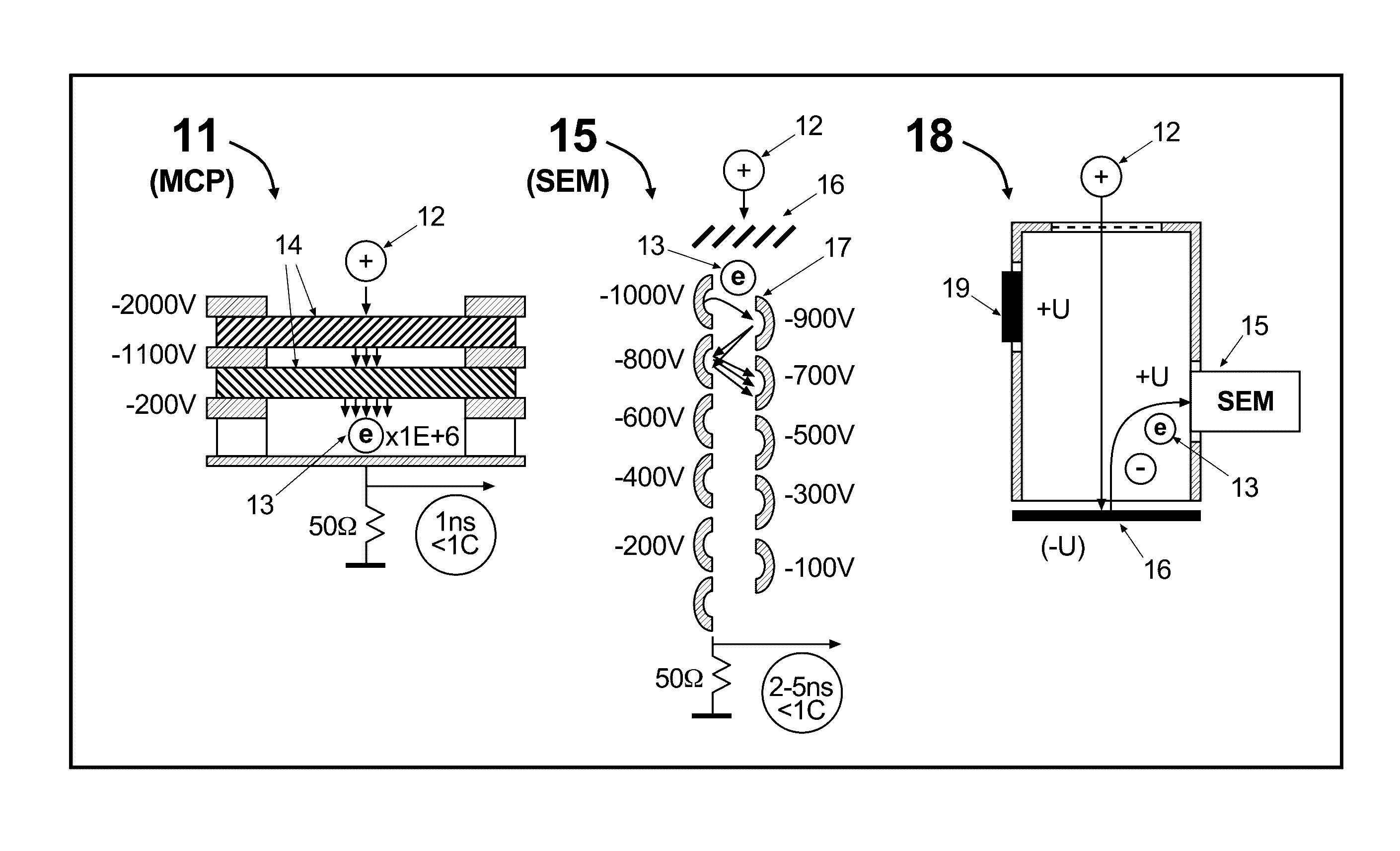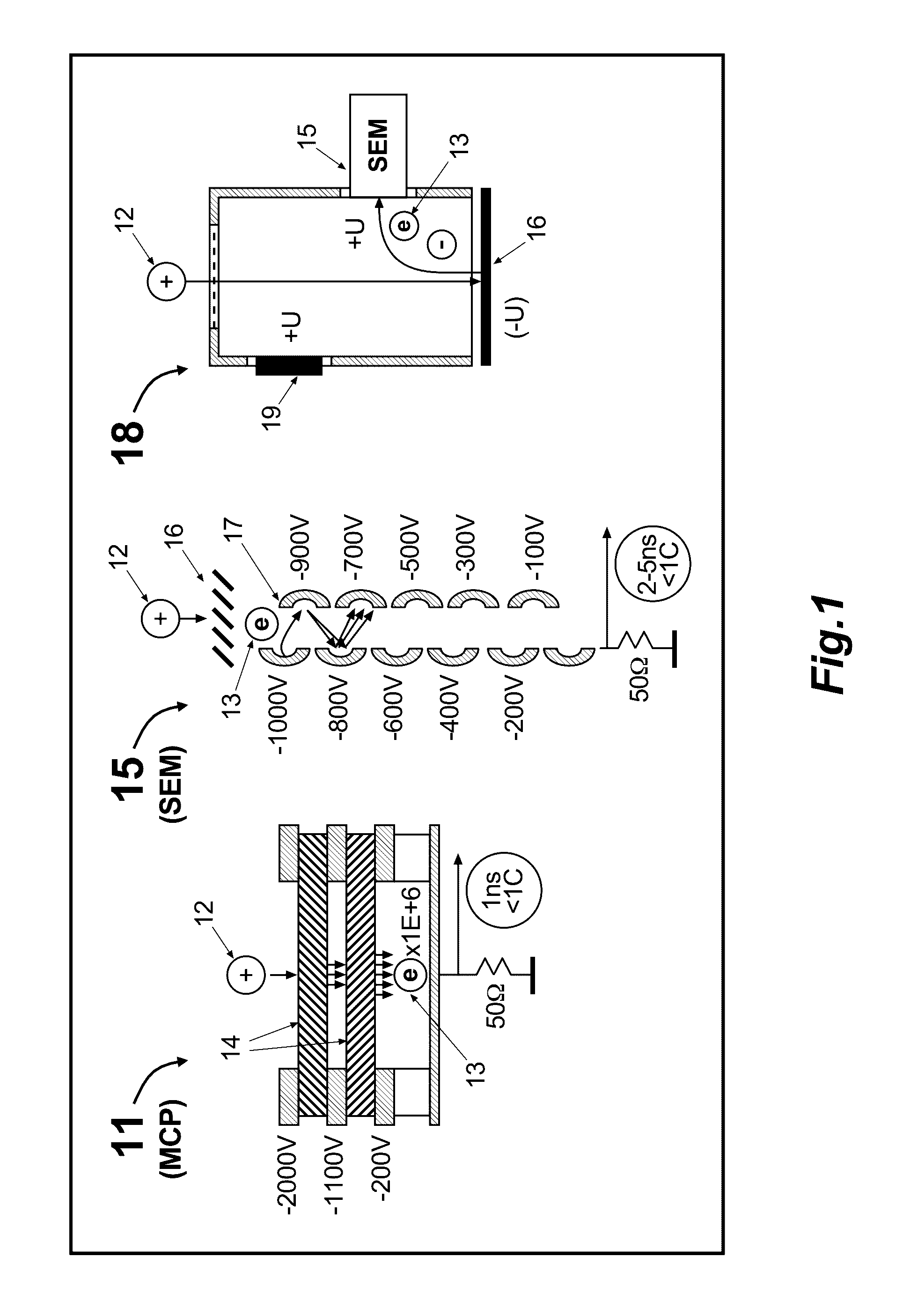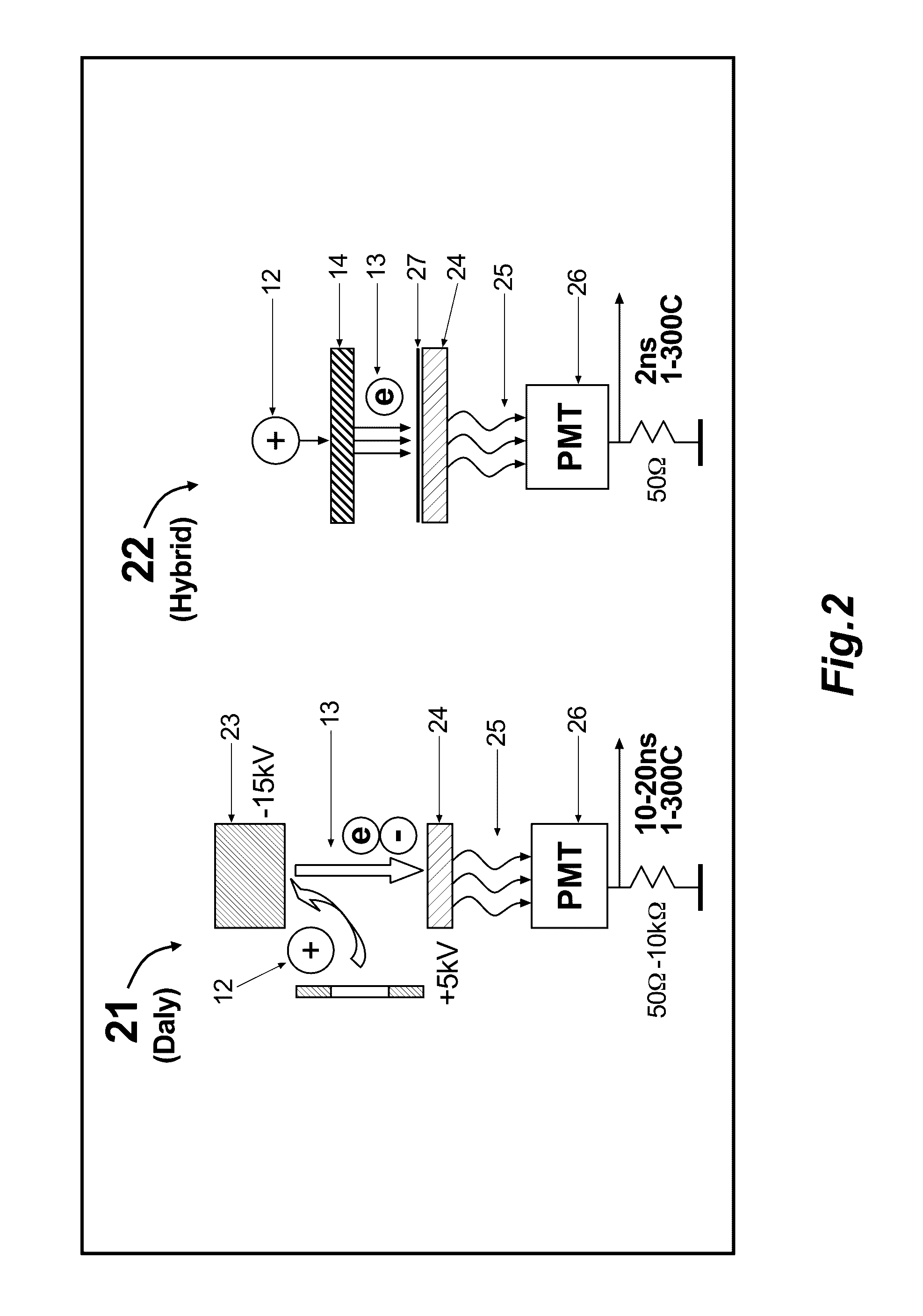Right Angle Time-of-Flight Detector With An Extended Life Time
a detector and right angle technology, applied in mass spectrometers, particle separator tube details, radiation intensity measurement, etc., can solve the problems of significantly limiting factors of detector life, reducing life time to under one coulomb, etc., to suppress slow fluorescence, enhance detector efficiency, and excellent detection efficiency of individual ions
- Summary
- Abstract
- Description
- Claims
- Application Information
AI Technical Summary
Benefits of technology
Problems solved by technology
Method used
Image
Examples
embodiment
[0057]Detector Embodiment
[0058]To alleviate the above described problems, the detector's dynamic range and life time have been enhanced and adopted for a multi-reflecting TOF MS (MR-TOF MS) in the following novel combination.
[0059]Referring to FIG. 4, there is presented a zoom view of FIG. 3 showing a feasible detector position 32 within the MR-TOF MS 31 at which the detector 41 may reside. In one embodiment 41 of the present invention, the improved time-of-flight detector 41 includes: a conductive converter 46 facing an ion beam 42 and placed adjacent to a drift space 45 of the MR-TOF MS 31; a mesh-coated side window 48 within the drift space 45; magnets 47 oriented orthogonal to the window 48 position; an organic fast scintillator 24 coated or covered by a conductive mesh 4; and a photomultiplier 26 with an extended life time and fast time response. In a sense, the detector 41 is similar to the wide spread the Daly detector 21 of FIG. 2, except the detector 41 of FIG. 4 includes a...
PUM
 Login to View More
Login to View More Abstract
Description
Claims
Application Information
 Login to View More
Login to View More - R&D
- Intellectual Property
- Life Sciences
- Materials
- Tech Scout
- Unparalleled Data Quality
- Higher Quality Content
- 60% Fewer Hallucinations
Browse by: Latest US Patents, China's latest patents, Technical Efficacy Thesaurus, Application Domain, Technology Topic, Popular Technical Reports.
© 2025 PatSnap. All rights reserved.Legal|Privacy policy|Modern Slavery Act Transparency Statement|Sitemap|About US| Contact US: help@patsnap.com



